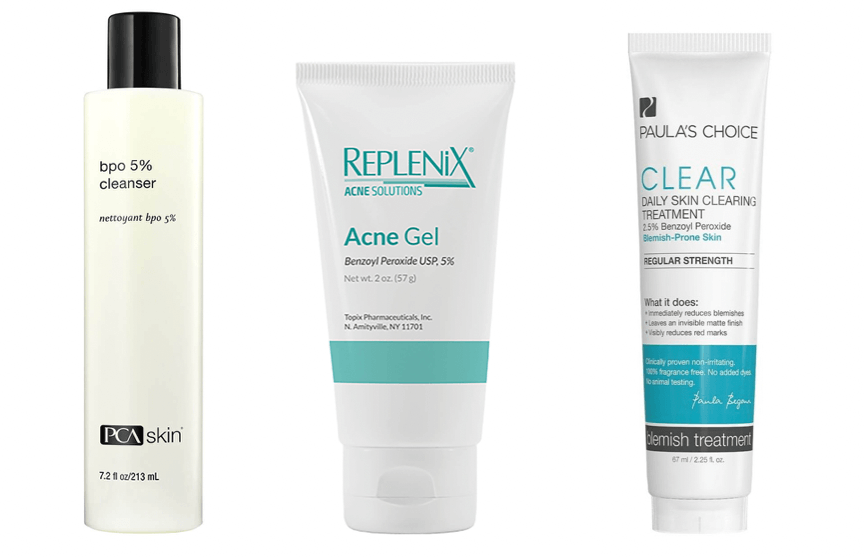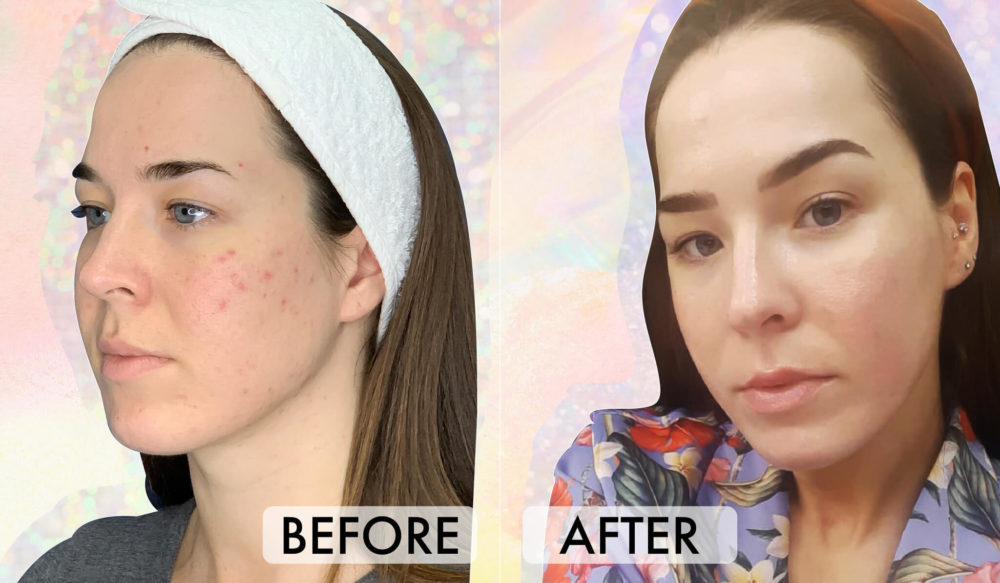The 2 Best Acne Treatments For Getting Rid Of Pimples
 Source: Romariolen/Shutterstock
Source: Romariolen/Shutterstock
The acne battle is real, and it’s one that can leave you feeling beyond frustrated and with way less cash in your pocket. There are practically a million products promising to fix the problem, and all the different acne ingredients out there can be super confusing, as well. Benzoyl peroxide and salicylic acid are easily two of the most common dermatologist-recommended acne ingredients, and each have scientific data to back up their claims, too.
To help you navigate the main differences between benzoyl peroxide and salicylic acid – and to determine whether salicylic acid is your girl or if your OTL is benzoyl peroxide – we asked a board-certified dermatologist to hit us with the facts.
What is Salicylic Acid?
To highlight the differences between salicylic acid and benzoyl peroxide, let’s take a look at each of them individually. Salicylic acid is a beta hydroxy acid (BHA) that is derived from the bark of the willow tree, though it can also be made synthetically in a laboratory.
“Salicylic acid is a gentle, yet effective, exfoliating agent. It helps to break apart dead, sticky skin cells and remove them from the skin to reveal healthy, smoother skin,” says Dr. Jen Haley, a board-certified dermatologist based in Scottsdale, Arizona. “It is also anti-inflammatory, which is why I like salicylic acid for acne, rosacea, and anyone with sensitive skin, and it has mild anti-bacterial properties making it helpful for fighting the bacteria that cause acne.”
Dr. Haley particularly recommends salicylic acid for those with oily, acne-prone skin types since it does a killer job of nixing excess sebum output and purifying clogged pores. It’s also ideal for those struggling with a smattering of whiteheads and/or blackheads.

She notes, “When you have a blackhead, which is an open comedone, or whitehead, which is a closed comedone, this is basically caused by skin cells and oil forming a plug [in a pore]. The salicylic acid can help loosen and gently remove this plug without abrasive forces and while simultaneously reducing inflammation.”
As with all good things, including cake and cocktails, moderation is key when it comes to salicylic acid. If you go overboard with it, then your skin might become red, irritated, and even dry from over-exfoliation. It’s best to use mild concentrations when using an all-over product such as a cleanser or cream, and to reserve the more potent stuff for spot treatments.

Speaking of products, Mario Badescu Acne Facial Cleanser, $15, is a super gentle gel cleanser that targets acne with salicylic acid while soothing skin with aloe vera and chamomile. For an all-over treatment try Inkey List Beta Hydroxy Acid, $11. You’ll just need a couple drops of the stuff, and it can even be paired with your favorite moisturizer. If you’re looking for salicylic acid spot treatments, try Clean & Clear Advantage Spot Treatment with Witch Hazel, $6.50.
Posts You'll Love:
What is Benzoyl Peroxide?
Let’s switch gears to talk about benzoyl peroxide. Unlike salicylic acid (which is an exfoliating acid), benzoyl peroxide is a synthetical peroxide. When the ingredient is applied to your skin, it releases free oxygen radicals that are basically like kryptonite for acne bacteria.
“Benzoyl peroxide tends to work best for inflammatory acne lesions –AKA the red spots that show up the night before a date or interview,” says Dr. Haley. “It kills bacteria, may exfoliate, and reduces oil production.”
Cosmetically speaking, benzoyl peroxide isn’t quite as easy to formulate with compared to salicylic acid. Benzoyl peroxide creams often leave behind a white film, so they’re not exactly a covert leave-on treatment. Dr. Haley says you can get similar results when massaging a 5% benzoyl peroxide wash cleanser into your skin for a couple minutes twice a day versus using a cream. Try PCA Skin BPO 5 Percent Cleanser, $39, or Replenix Acne Solutions Acne 5% Wash, $19.70.

Creams, such as Paula’s Choice Regular Strength Daily Skin Clearing Treatment with 2.5% Benzoyl Peroxide, $18, can still be used as a boss spot treatment. Dr. Haley says, “I will often recommend spot treating a juicy pimple with benzoyl peroxide cream, as it works quickly to help make the pimple go away.”
Like salicylic acid, benzoyl peroxide should be used sparingly. Also, you don’t need a super high concentration of 10% benzoyl peroxide in order to benefit from it. In fact, Dr. Haley says that there’s not much of a treatment difference between using 10% versus 5%, and that the higher concentration can actually be super irritating to all skin types.
On that note, about 10% of people have some sort of reaction to using the ingredient even in smaller concentrations, so if you have sensitive skin then it’s wise to do a spot-test first. Another drawback is that benzoyl peroxide is known for bleaching things, including your towels, clothes, eyebrows, and even skin.
Posts You'll Love:
How to Choose Between Salicylic Acid vs. Benzoyl Peroxide
Now that you know the difference between benzoyl peroxide and salicylic acid, let’s help you determine which ingredient is best for your skin.
“I prefer salicylic acid for sensitive, oily, congested skin with a lot of blackheads and whiteheads,” says Dr. Haley. “I also like salicylic acid for daily use for someone who wants gentle exfoliation and may be a bit oily even if they don’t have acne.”
Contrarily, she recommends benzoyl peroxide for someone who has hyperpigmentation – AKA sun spots or lingering post-inflammatory-hyperpigmentation from old pimples. It also tends to treat those deep and tender pimples very well, where salicylic acid targets tiny whiteheads, blackheads, and smaller pimples.
Of course, you can always use both ingredients if you have a combination of skin issues, says Dr. Haley. Some products are even formulated with both. She adds, “Just be sure that anytime you use a medicated cleanser – [whether it uses benzoyl peroxide, salicylic acid, or both] – that you gently massage it and leave it on your skin for a full two minutes to get the product deep into your pores so it can do its job.”
A Quick Recap
Both benzoyl peroxide and salicylic acid are acne-fighting ingredients that can help keep oil production under control. They do have a number of differences, though.
Salicylic acid works more as an exfoliating agent that helps unclog whiteheads and blackheads to reveal brighter, clearer skin. Because it has anti-inflammatory properties, it tends to be better for those with sensitive skin. Contrarily, benzoyl peroxide targets and kills the acne bacteria itself to help quickly zap those angry, red, oversized zits. It can also help fade lingering red spots from old acne, which is referred to as PIH or post-inflammatory hyperpigmentation.
The truth is that you don’t necessarily have to choose between the two ingredients, but you may find that your skin type responds better to one over the other. Our best advice is to consider all of the information you soaked up today and then try the ingredient that sounds like it’ll suit your skin best.























Leave a comment